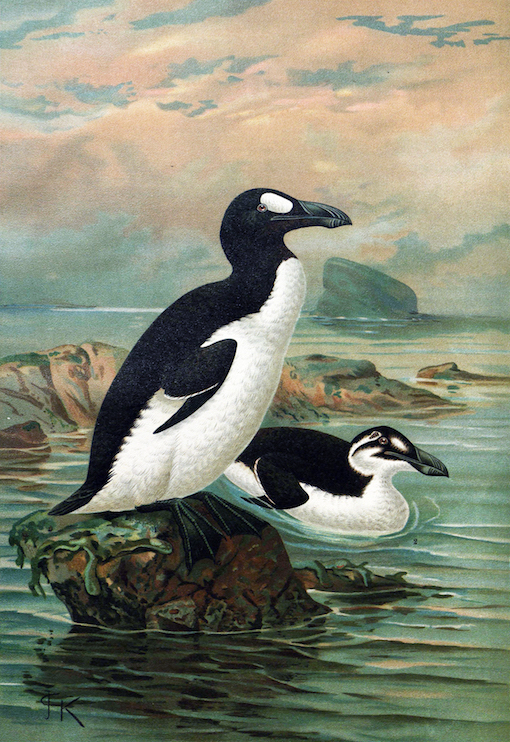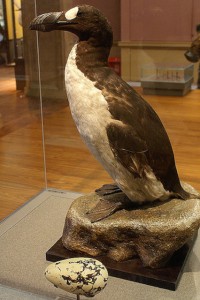The British Farne Islands could see the return of the Great Auk, extinct since 1844, as genetic scientists announce plans to recreate the species using DNA from museum specimens.
Using still “live” DNA from the nearly-200 year extinct Great Auk, geneticists from the San Francisco-based Revive and Restore group plan a “genetic rescue” involving extracting Auk DNA and sequencing the bird’s genetic code. These would then be edited into the cells of its nearest relative: the Razorbill. Fertilised embryos would, in turn be placed into eggs (probably a goose egg due to its size) and hatched. The living birds would then be reintroduced into the Farne Islands off our North East coast.
Flightless and defenseless against humans on land and apparently good to eat, the 80cm high Great Auk’s history traced the tragic path of the dodo before it. In fact as it became rarer the frequency of its shooting increased as hunters tried to bag the now rare catch for its meat and prized feathers. Prior to the 16th century, the species was so abundant that colonies consisting of hundreds of thousands packed the shores along certain North Atlantic islands during their month-long breeding season. In 1622, Captain Richard Whitbourne said sailors harvested the auks: “by hundreds at a time as if God had made the innocency of so poor a creature to become such an admirable instrument for the sustenation of man.” By 1844 the final colony was killed off on Eldey Island off the coast of Iceland.
So far the project is at the discussion stage, along with several others (see reviverestore.org). One question on its reintroduction was whether there are enough fish left to sustain a hungry and exploding breeding population?” GV



